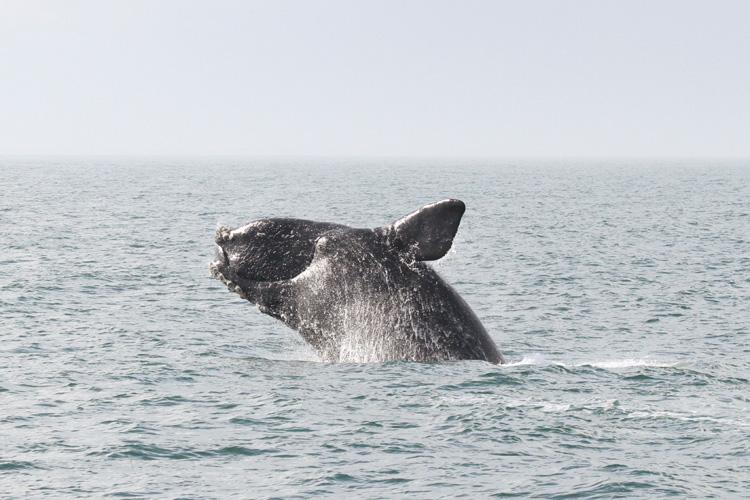High Seas Treaty Opens the Door for Global Ocean Conservation

This story about the High Seas Treaty is part of The Solutions Effect, a monthly newsletter covering the best of solutions journalism in the sustainability and social impact space. If you aren’t already getting this newsletter, you can sign up here.
After almost 20 years of debate, the United Nations High Seas Treaty officially became international law in September, lighting a path for protecting the two-thirds of the world’s oceans that lie outside national jurisdictions and the myriad of creatures living there.
The ocean is teeming with plants and animals, many of them still unknown to us, and rich in natural resources. But researchers warn that negative human-caused impacts on the ocean could more than double by 2050, potentially decimating swaths of the seas if not dialed back. These underwater ecosystems are vital to the health of the planet and our economies. They’re also mostly ungoverned, with scattered patches regulated by regional agreements and marine protected areas.
The High Seas Treaty — officially called the Treaty for the Conservation and Sustainable Use of Marine Biological Diversity of Areas Beyond National Jurisdiction and a part of the U.N. Law of the Sea Convention — is meant to fill those gaps in the name of biodiversity protection and sharing the benefits of international waters globally.
Informal discussions around protecting and managing international waters began in the early 2000s. It wasn’t until 2023 that a treaty text was finally adopted. It’s a feat experts expected to take much longer, and many thought would never occur.
Morocco became the 60th country to ratify the agreement on September 19, pushing the treaty past the threshold necessary to become legally binding. Since then, another 15 countries signed on. It goes into effect mid-January 2026.
As of now, the High Seas Treaty focuses on establishing marine protected areas dedicated to marine biodiversity and ecosystem conservation, similar to national parks on land. It also calls for regular environmental impact assessments and for participating countries to share knowledge and technology to improve conservation, as well as to share in the financial and non-financial benefits that come along with it. As global discussions of deep-sea mining, plastic pollution and climate change continue, this treaty will likely come into play.
Countries working to implement the agreement will meet for the first time in 2026 to adopt the governing structures, systems and responsibilities needed to put the treaty into action. In the meantime, we can look to existing solutions to get an idea of what effective ocean conservation looks like in practice.
Crossbred coral
The Florida Keys are home to one of the largest coral reef restoration projects on the planet. Recently, researchers were set back when the corals they’d painstakingly replanted were bleached again in the extreme summer heat. Though bleached coral is not necessarily dead, it will not survive if the conditions around it don’t improve. Now, many are wondering if breeding corals that naturally tolerate heat better instead of replanting the same species over again is the direction conservation should be heading, NPR reports.
Researchers at the University of Miami created what they call the “Flonduran” species of coral by collecting coral from Honduras and crossbreeding it with coral from Florida, hoping the Honduras coral would pass on its ability to survive heat. Their work was just put into its first controlled trial in the wild. Baby Flonduran corals were planted on a Miami reef earlier this summer, marking the first time regulators allowed internationally bred coral to be planted in the U.S. So far, the new coral is doing well. Read more.
Deepfake whales
Computer-generated videos of animals accomplishing seemingly impossible feats are making the rounds on social media. As harmful as fake videos and images are, they also inspired a potentially helpful breakthrough for endangered species conservation, Inside Climate News reports.
Researchers use artificial intelligence tools to sort through the endless stream of satellite data they use to track species, but those AI models need to see hundreds of images of animals to learn how to properly identify them. That’s essentially impossible for endangered species like the North Atlantic right whale, so researchers at Duke University’s Marine Robotics and Remote Sensing Lab used AI to create fake whale images to train their whale-spotting AI model. Their work is still in the testing phase, but it seems promising so far, creating images that resemble real whales enough to trick Google’s reverse image search tool.
The benefits: They could eventually use this method to track the few remaining North Atlantic right whales and aid conservation efforts. The downside: Using AI to create images requires energy- and water-hungry data centers, which can fuel the climate issues harming the whales in the first place.
“It becomes difficult to grapple with a lot of these sort of cost-benefit-analysis kind of decisions,” Henry Sun, a doctoral student at Duke working on the whale project, told Inside Climate News. “I’m training this model that uses this amount of energy, but we have this benefit of maybe being able to better manage these whales, or, in this case, develop a tool that could result in conservation. Does that outweigh the harms? It’s difficult to say.” Read more.
Jellyfish-inspired fishing devices
Fisheries use raft-like structures with submerged webbing, called fish aggregating devices, to attract fish and make them easier to catch. But sea turtles, sharks, and marine mammals can be caught and injured by these devices, as TriplePundit previously reported. And when they’re lost at sea, they pollute and damage the environment. The International Seafood Sustainability Foundation hopes to solve for that with a biodegradable, non-entangling upgrade.
Made from organic materials like bamboo or cotton and designed alongside fishers and oceanographers, the team spent 10 years creating the jelly-FAD. It’s a fish aggregating device that drifts like a jellyfish and features no netting. The devices last around 12 months in the water before biodegrading — double the amount of time fishers usually use them. With fisheries in the Atlantic Ocean, the eastern Pacific Ocean, and the Indian Ocean required to use biodegradable fish aggregating devices by 2030, it’s hitting the market at the right time. Read more.
What’s next for the High Seas Treaty
The emphasis on establishing protected waters and knowledge sharing in the High Seas Treaty opens the doors for projects like these to grow. As other global talks stall, it’s a welcome reminder that these years-long negotiations can result in progress. But more work is needed.
For the most part, only countries that ratified the treaty must adhere to it. The United States and China, for example, signed the treaty to signify support, but have not taken the next step to ratify it. Because unsustainable fishing has a large impact on the ocean, ratification from the world’s leading fishing nations — including the U.S. and China — will be critical to the treaty’s effectiveness, said Carl Nettleton, TriplePundit contributor and president of the plastic pollution solutions nonprofit OpenOceans Global.
“Of the top 10 fishing nations, only four have ratified the High Seas Treaty to date, and two nations, Russia and Japan, did not sign the treaty,” he said. “The catches of the nations that have not yet ratified the treaty constitute 70 percent of the weight of fish caught in 2021 by the top 10 nations. Historically, compliance and the lack of effective enforcement of international ocean treaties have been challenging. Here’s hoping the High Seas Treaty will be different.”
Here’s hoping.
Image credit: NOAA Fisheries



Post Comment